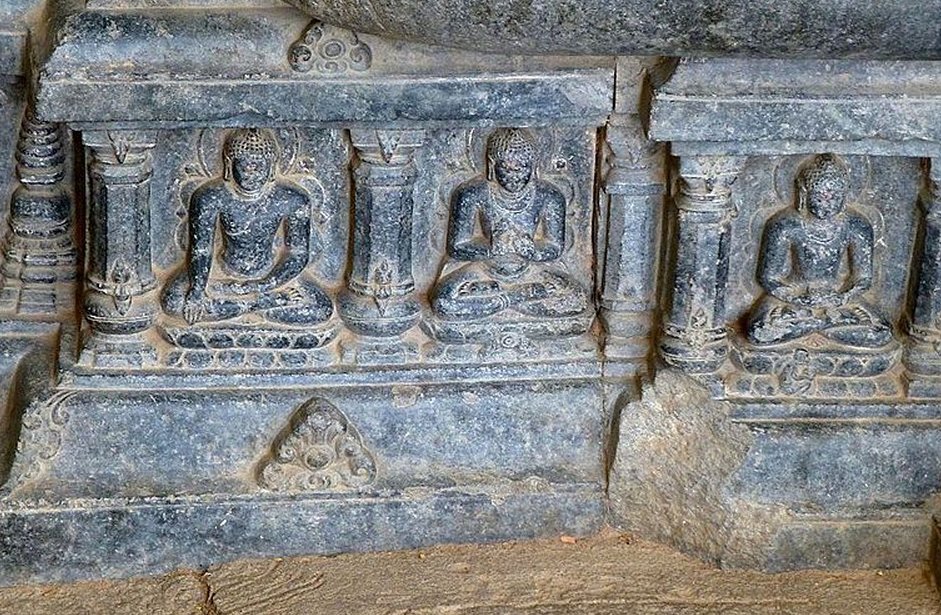Barabar Caves: The Oldest Surviving Rock-Cut Caves With Acoustic Effects In India
A. Sutherland - AncientPages.com - The Barabar Caves are considered the oldest surviving rock-cut caves in India. Mostly dated to the Maurya Empire (322-185 BC), they were carved out of huge, hard granite rock.
The surfaces of caves are not only remarkably polished and beautiful but also enhance every sound inside the caves.
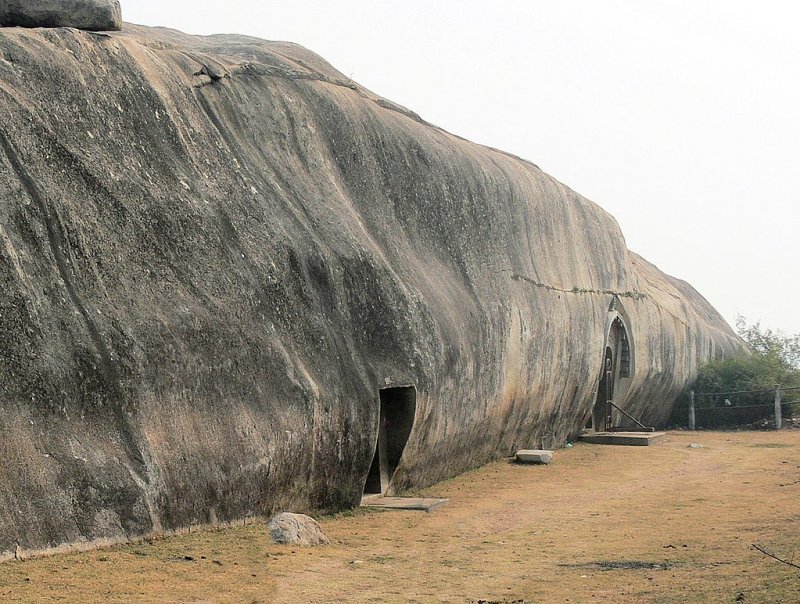 Entrances of Sudama Cave, and further, Lomas Rishi Cave, Barabar Hill. Image credit: Klaus-Norbert - CC BY 3.0
Entrances of Sudama Cave, and further, Lomas Rishi Cave, Barabar Hill. Image credit: Klaus-Norbert - CC BY 3.0
Sir John Hubert Marshall (1876-1958), who oversaw the excavations of Harappa and Mohenjodaro, two of the main cities that comprise the Indus Valley Civilization, wrote about the Mauryan sculpture:
"extraordinary precision and accuracy which characterizes all Mauryan works, and which has never, we venture to say, been surpassed even by the finest workmanship on Athenian buildings."
There are seven caves in all and are dated at least two thousand five hundred years old. They are a mysterious and fascinating place mainly due to a remarkable combination of high polish finish and incredible echo effects generated within the caves.
The caves are situated in the twin hills of Barabar (four shelters). Three others - Nagarjuna Caves are in the 1.6 km distant Nagarjuna Hill, among the rock-strewn ridges of Jahanabad, Bihar, India.
Glass-Like Smoothness And High Perfection Of Skilled Builders
Barabar Caves is an important archaeological site. Carved out from solid rocks, the caves bear details of the life of Buddha.
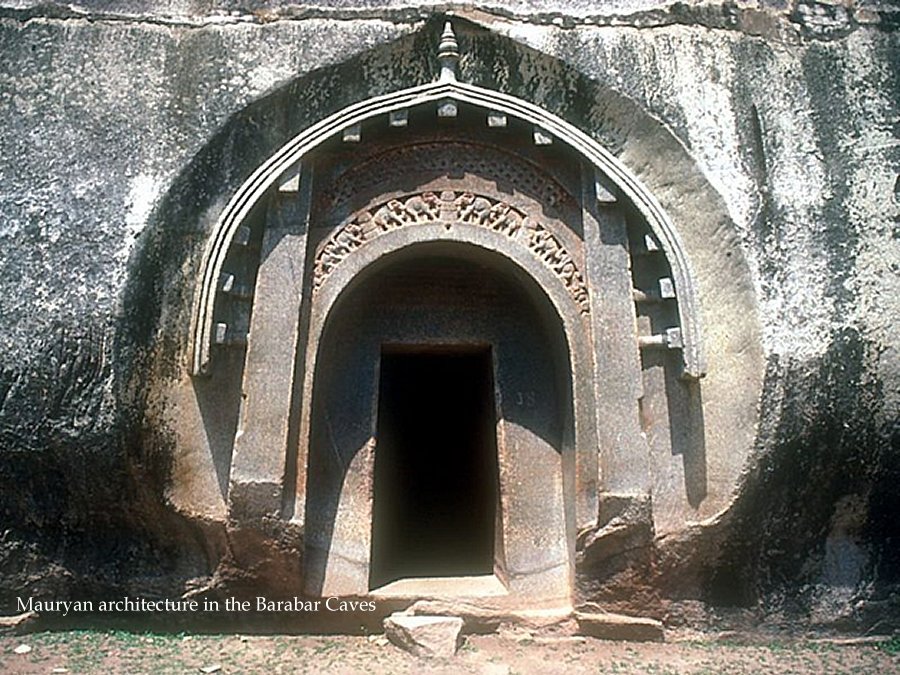 Mauryan architecture in the Barabar Mounts. Grotto of Lomas Rishi. 3rd century BC. Image credit: Photo Dharma from Penang, Malaysia - CC BY 2.0
Mauryan architecture in the Barabar Mounts. Grotto of Lomas Rishi. 3rd century BC. Image credit: Photo Dharma from Penang, Malaysia - CC BY 2.0
Most Barabar caves consist of two rooms, cut out of granite, with perfectly chiseled and polished inner surfaces, resulting in high perfection glass-like smoothness. The impression is imposing because rock boulders outside the cave are rough and irregular.
The technology and design of the Barabar caves have features such as inclining walls, rounded roofs, and lustrous inner surfaces, which we can characterize as mirror-like in their fantastic effect.
Their acoustics is also masterwork; the surfaces are remarkably polished and beautiful and enhance every sound inside the caves!
They give an impression as if they are cut with a laser. Building technical knowledge and skills of ancient creators are recognizable and remarkable because this work was done over 2,200 years ago.
Ajivika Ascetics Were Portrayed As 'Charlatans'
One of the caves belonged to Buddhists, and at least two others were associated with Ajivika.
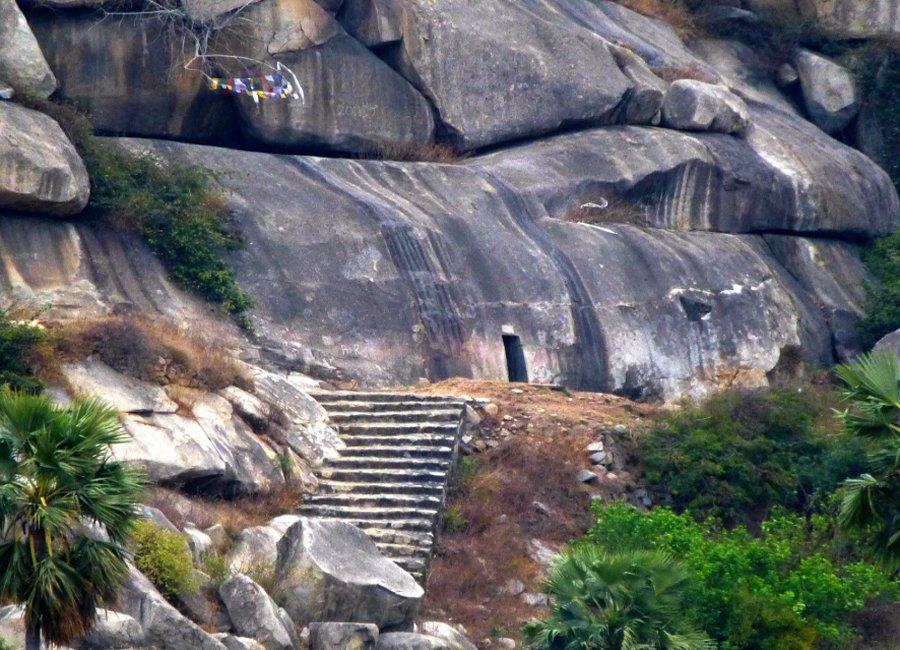
Staircase and Cave Entrance of the Gopika cave, at Barabar, Bihar. Image credit: Anandajoti - CC BY 2.0
This ascetic sect emerged in India about the same time as Buddhism and Jainism and lasted until the 14th century.
The caves were carved out of granite, then finished with a polishing of the inner surface, giving a perfect mirror effect of great regularity. An additional feature of the Barabar Caves is an echo effect.
The first room, a large rectangular hall, was used for gatherings of worshippers, and the second, a smaller, round, and domed - for worship. At the site, there are several rock-cut Buddhist and Hindu sculptures. Some caves have decorations in the form of Ashokan inscriptions. Ashoka the Great was an Indian emperor of the Maurya Dynasty who ruled almost all of the Indian subcontinent from c. 268 to 232 BC
Three Nagarjuna Caves - the Vadathika, the Vapiyaka, and the Gopi - are smaller and younger than Barabar caves. They can be found on and around Nagarjuna Hill. The biggest of them is the Gopi, decorated with inscriptions found within and above the doorway.
Buddha Statue Base at Barabar, Bihar, India. Image credit: Photo Dharma - CC BY 2.0
All the three Nagarjuna caves, with the same glass-like finish on the rock surfaces, testify to the technical skills of India's builders and the high quality of their equipment.
The text refers to the cave excavation in 214 BC, when King Dasaratha, the grandson of Ashoka ruler (273–232 BC), ascended the throne and donated the Nagarjuna caves to the Ajivikas, the lost Ajivika sect. This sect - to the 5th century BC - once competed with Buddhism and Jainism for influence, only to lose out and get wiped off.
Today, everything, including the texts of their faith, has been lost.
There is some knowledge about Ajivikas' history and philosophy, but it originates from secondary sources, mainly the ancient and medieval texts of India, especially the Buddhist and Jain sources.
The Ajivikas have been portrayed as 'Charlatans,' and their beliefs are trashed. We know they were fatalistic, and their central belief was 'Niyati' or Fate. They sincerely believed in fate. There was no free will; everything that has happened, is happening, and will happen is entirely preordained, and nothing could change it.
Updated on June 22, 2022
Written by A. Sutherland - AncientPages.com Senior Staff Writer
Copyright © AncientPages.com All rights reserved. This material may not be published, broadcast, rewritten or redistributed in whole or part without the express written permission of AncientPages.com
Expand for referencesC.P.R. Environmental Education Centre, Chennai
N. Lahiri, Ashoka in Ancient India
More From Ancient Pages
-
 Central Asia Identified As A Key Region For Human Ancestors
Archaeology | Oct 22, 2022
Central Asia Identified As A Key Region For Human Ancestors
Archaeology | Oct 22, 2022 -
 Hird – Viking Warriors And Professional Body Guards Prepared To Die For Their Leader
Featured Stories | Mar 22, 2018
Hird – Viking Warriors And Professional Body Guards Prepared To Die For Their Leader
Featured Stories | Mar 22, 2018 -
 Unexpected Underwater Discovery Of 50,000 Ancient Coins Off Sardinia Hints At Hidden Shipwreck
Archaeology | Nov 10, 2023
Unexpected Underwater Discovery Of 50,000 Ancient Coins Off Sardinia Hints At Hidden Shipwreck
Archaeology | Nov 10, 2023 -
 Mongol Empire: Rise And Fall Of One The World’s Largest And Fearsome Empires
Featured Stories | Mar 26, 2021
Mongol Empire: Rise And Fall Of One The World’s Largest And Fearsome Empires
Featured Stories | Mar 26, 2021 -
 Sir William Wallace: Brave Scottish Knight And Legendary Hero
Featured Stories | Feb 27, 2016
Sir William Wallace: Brave Scottish Knight And Legendary Hero
Featured Stories | Feb 27, 2016 -
 Lady SAS – Ancient Skeleton Of Foreign Woman Found In Palenque – Who Was She?
Archaeology | Apr 11, 2023
Lady SAS – Ancient Skeleton Of Foreign Woman Found In Palenque – Who Was She?
Archaeology | Apr 11, 2023 -
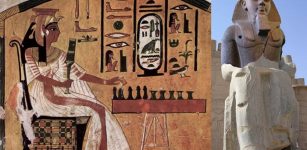 Queen Nefertari – Favorite Wife Of Ramses II The Great And Her Lavishly Decorated Tomb In The Valley Of The Queens
Featured Stories | May 22, 2020
Queen Nefertari – Favorite Wife Of Ramses II The Great And Her Lavishly Decorated Tomb In The Valley Of The Queens
Featured Stories | May 22, 2020 -
 Prehistoric Spread Of Millet From East Asia To Central Europe – New Study
Archaeology | Jun 10, 2022
Prehistoric Spread Of Millet From East Asia To Central Europe – New Study
Archaeology | Jun 10, 2022 -
 Cassandra: Greek Goddess Who Foretold Cursed Prophecies
Featured Stories | Aug 24, 2016
Cassandra: Greek Goddess Who Foretold Cursed Prophecies
Featured Stories | Aug 24, 2016 -
 On This Day In History: Antarctic Explorer Lawrence “Titus” Oates Born – On Mar 17, 1880
News | Mar 17, 2017
On This Day In History: Antarctic Explorer Lawrence “Titus” Oates Born – On Mar 17, 1880
News | Mar 17, 2017 -
 Shaka Zulu: African Hero And One Of Greatest Military Leaders Of All Time
Featured Stories | Nov 5, 2016
Shaka Zulu: African Hero And One Of Greatest Military Leaders Of All Time
Featured Stories | Nov 5, 2016 -
 15 Precious Ancient Objects Returned To Greece From Switzerland – Antique Dealer Charged With Trafficking
Artifacts | Feb 3, 2023
15 Precious Ancient Objects Returned To Greece From Switzerland – Antique Dealer Charged With Trafficking
Artifacts | Feb 3, 2023 -
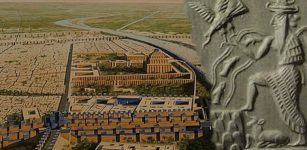 Eridu: Pre-Flood City That Belonged To Enki, God Of Creation, Intelligence, Wisdom And Magic
Civilizations | Mar 27, 2017
Eridu: Pre-Flood City That Belonged To Enki, God Of Creation, Intelligence, Wisdom And Magic
Civilizations | Mar 27, 2017 -
 2,500-Year-Old Large Untouched Scythian Burial Ground Unearthed In Khakassia, Siberia
Archaeology | Oct 6, 2020
2,500-Year-Old Large Untouched Scythian Burial Ground Unearthed In Khakassia, Siberia
Archaeology | Oct 6, 2020 -
 Biblical Lydia ‘Woman Of Purple’ Who Run Her Own Business
Biblical Mysteries | Apr 9, 2019
Biblical Lydia ‘Woman Of Purple’ Who Run Her Own Business
Biblical Mysteries | Apr 9, 2019 -
 Asgard: Enter The Ancient Kingdom Of The Powerful Norse Gods
Featured Stories | Aug 7, 2016
Asgard: Enter The Ancient Kingdom Of The Powerful Norse Gods
Featured Stories | Aug 7, 2016 -
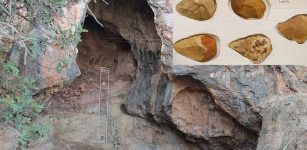 Oldest-Known Grinding Tool Used 350,000 Years Ago Was Found In Tabun Cave, Israel
Archaeology | Jan 4, 2021
Oldest-Known Grinding Tool Used 350,000 Years Ago Was Found In Tabun Cave, Israel
Archaeology | Jan 4, 2021 -
 Strange Engraving Made By Knights Templar In French Village – Riddle Of The Rod – Part 1
Featured Stories | Oct 7, 2019
Strange Engraving Made By Knights Templar In French Village – Riddle Of The Rod – Part 1
Featured Stories | Oct 7, 2019 -
 Sweden’s Tanum And Skredsvik Petroglyphs: Thousands Of Spectacular And Intriguing Rock Art
Featured Stories | Aug 28, 2018
Sweden’s Tanum And Skredsvik Petroglyphs: Thousands Of Spectacular And Intriguing Rock Art
Featured Stories | Aug 28, 2018 -
 Early Humans In The Paleolithic Age Had A More Varied Diet Than Previously Assumed
Archaeology | Nov 29, 2023
Early Humans In The Paleolithic Age Had A More Varied Diet Than Previously Assumed
Archaeology | Nov 29, 2023

